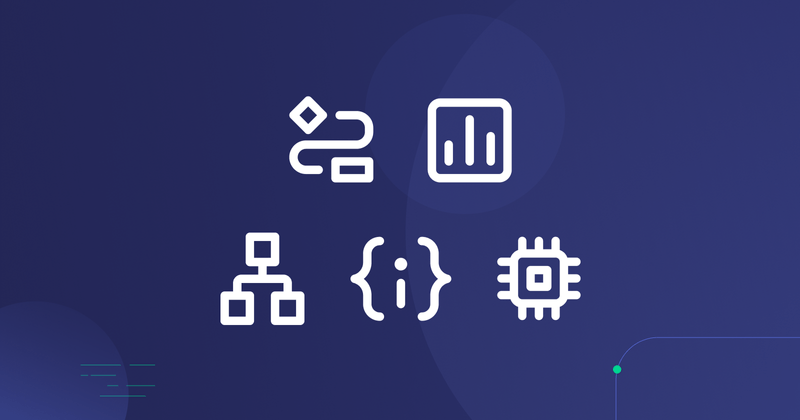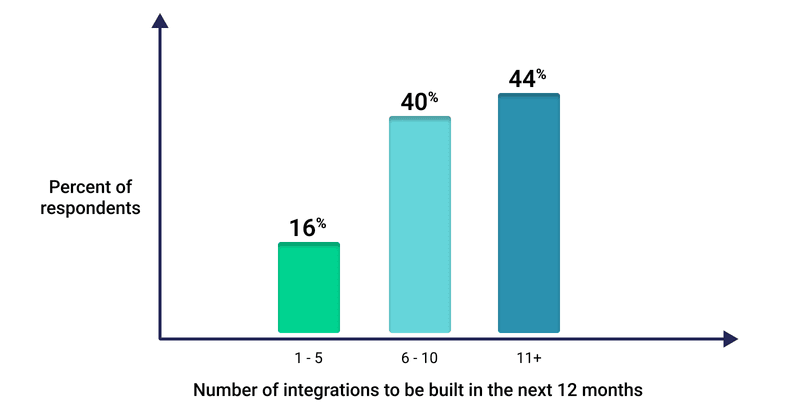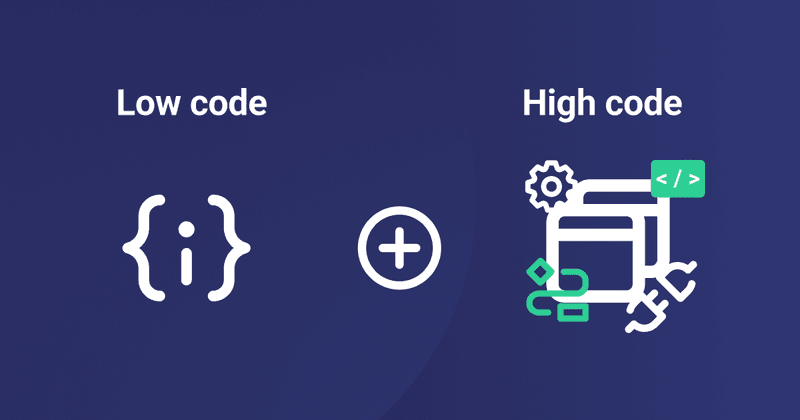2024 Integration Trends

Companies need data from disparate systems to be shared among those systems to enable workflow processes, expedite data analysis, and inform business planning. Software integrations are the most straightforward way to share that data.
The world of software integrations has evolved a lot. Over a decade ago, the first vendors entered the enterprise iPaaS market. Then, we saw the introduction of unified APIs. Finally, the embedded iPaaS for B2B SaaS apps was defined as separate from them both.
These tools and others were developed and refined to help companies solve increasingly complex integration challenges. And integrations aren't going away any time soon.
As the integration space matures and changes, here are five trends to consider.
1. The proliferation of SaaS apps will continue to drive the need for more integrations
There are more than 17,000 SaaS companies in the US, and the global SaaS market is projected to expand by more than 200% from now until 2030.
Why so many SaaS apps? In part, this is due to the democratization of modern SaaS apps. As the barriers to building SaaS apps continue to drop, it only takes a handful of people to turn an idea into an app that competes in the global marketplace.
Today's average company relies on more than 125 SaaS apps. That number grows every year as companies become more comfortable with a best-of-breed approach instead of relying on a relationship with a single large software company to support all their business needs.
Some recent data from our customers (SaaS companies who need integrations with their customers' other apps) shows that 44% of them plan to build more than 10 integrations within the coming year, with some planning to build as many as 75 integrations.

And, the more SaaS apps a business has, the greater the number of integrations it needs for those apps. As a result, integrations will be in high demand for the foreseeable future.
2. Integrations provided by SaaS apps out of the box will increase
Tied into the previous trend and companies' increasing reliance on the best-of-breed approach to selecting their SaaS apps, SaaS vendors realize they must bring their apps to the market with the integrations that customers expect.
As a result, modern SaaS apps and web services use integrations extensively. Without them, apps turn into data silos – and data silos make life more complicated for your customers. As a result, embedded integrations have become table stakes for SaaS.
IT teams increasingly say, "We could build these integrations internally, but it makes sense for any new SaaS apps we get to have integrations built in."
A few years ago, it was common to see new SaaS apps appear on the market without any integrations. And while this still happens, it's less common than it once was.
Initial go-to-market plans may not include integrations, but SaaS teams need answers for how and when they'll provide integrations for their customers.
This trend will only grow stronger as SaaS vendors strive to capture sufficient market share to make themselves viable long-term.
3. Integration solutions will continue to evolve to serve specific needs
Building integrations from scratch is a time-tested and functional approach. But, in most cases, more efficient ways exist to build integrations for data sharing between apps.
Companies can now use one of several tools or platforms to create the integrations their users and their customers need.
Let's look at a few of the most common integration toolsets available today.
- Enterprise iPaaS – This type of solution enables the development, deployment, and support of integrations inside your company. This platform connects apps via integrations between internal business systems. It is primarily used by IT personnel, though non-technical users may also use a low-code/no-code integration designer.
- Workflow Automation – While this broader term could encompass all the other categories, it can also be a category to itself. Tools such as Zapier fit this category better than any other. Zapier is a platform that can be used for integrations inside and outside the enterprise but is primarily the choice of individuals who need to integrate common apps from their desktops.
- Embedded iPaaS – This set of tools enables a software company to quickly build reusable, configurable integrations from its product to any app in any software category and deliver them to its customers as a seamless part of its product. Technical and non-technical people use it to create product integrations for B2B SaaS companies.
- Unified API – This platform connects several APIs in a standard software category to a single API to simplify the integration process. B2B SaaS companies use unified APIs for integrations with multiple apps in a single horizontal category (example: ATS). Unified APIs are used by technical and non-technical users.
The products in each category continue to evolve as the SaaS market expands and companies and customers continue to develop new use cases in pursuit of software integration.
These categories will continue to develop as more solutions enter the market, and we may even see completely new solutions attempting to address previously unknown categories or market sectors.

4. Integration solutions will need to support low-code and high-code development
The introduction of low-code/no-code tools for building integrations was revolutionary. This advancement made integration development accessible for a whole new group of users: non-developers. These non-developers often use drag-and-drop integration designers to connect Well-known App A with Well-known App B. In this scenario, the low-code approach is sufficient.
However, we also have the technical non-developers who need to create integrations. These are the same people who are comfortable using Crystal Reports or Power BI to build reports. While not comfortable writing code from scratch, they are willing and able to go beyond the low-code integration UI to change inputs and outputs, adjust configurations, and, yes, even tweak a bit of code occasionally.
Finally, we have developers accustomed to using various IDEs to write code. Not only are they uncomfortable using a low-code UI, but many also believe that it kills their productivity. As a result, they want an integration builder experience that lets them write code from start to finish.
The key here is that a single SaaS company may need to build integrations with one of these approaches, or it may need to use all of them. In many cases, the SaaS team may not know what exact approach it needs to use until team members have sat down, reviewed the integrations they need to build, and figured out what resources will be required to complete the job.
The market for low-code integration development is here to stay, but high-code integration tools are essential for the complex, real-world integration scenarios SaaS companies must address.
5. AI will play an increasing role in solving the integration puzzle
While it's early to know the impact AI will have on integrations, we see how AI is being used today and anticipate that AI interactions with integrations will only increase.
The number of AI-based companies is quickly expanding, with some putting the number as high as 67,000 worldwide. While many of these companies are staying alive because of our current fascination with all things AI, some of them will go on to produce real value in the market.
AI systems such as Azure OpenAI and OpenAI are currently used within integrations as endpoints. And, of course, the key to AI is lots of data, so we see integrations being used to collect massive amounts of data for training LLMs and other AI-related systems.
In addition, some low-code designers have started incorporating AI prompts into the build process, providing users with real-time interactive integration build support.
AI systems will become better at predicting integration patterns and more helpful in assisting with integration development. AIs will likely find their integration niche as tools that remove the monotony from creating integrations.
Are you providing value to your customers?
Trends come and go. But your B2B SaaS customers will be here for a very long time – if they continue to receive value from your product. One of the ways you can provide value is by ensuring that your product has essential integrations available on day one.
Using an embedded iPaaS like Prismatic allows you to provide integrations directly within your app, ensuring that your customers don't need to go anywhere else to view, select, and activate all the integrations they need between your product and the other apps they use.
Schedule a demo, and let us show you how Prismatic can help you create integration value for your customers and increase product stickiness.
About Prismatic
Prismatic, the world's most versatile embedded iPaaS, helps B2B SaaS teams launch powerful product integrations up to 8x faster. The industry-leading platform provides a comprehensive toolset so teams can build integrations fast, deploy and support them at scale, and embed them in their products so customers can self-serve. It encompasses both low-code and code-native building experiences, pre-built app connectors, deployment and support tooling, and an embedded integration marketplace. From startups to Fortune 100, B2B SaaS companies across a wide range of verticals and many countries rely on Prismatic to power their integrations.
Get the latest from Prismatic
Subscribe to receive updates, product news, blog posts, and more.

